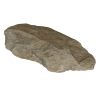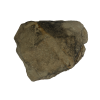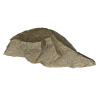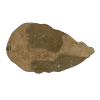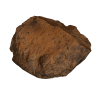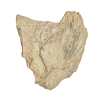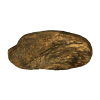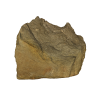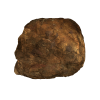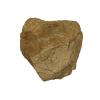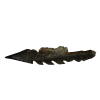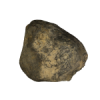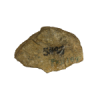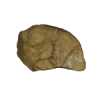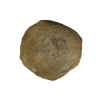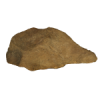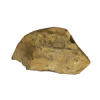This scraper was made from a relatively small core which has had several flakes struck off it reducing it in size and producing several sharp cutting edges to the original basalt cobble. The retouching of the cutting edge is visible. This tool might have been used for cutting into flesh, bone or other organic material.
The Karari Industry scrapers from FxJj18 commonly show evidence of simple retouching. They are often associated with butchery sites, where the fossil remains of the animal show distinct cut marks produced by these stone tools.
This scraper was made from a basalt cobble, the source of which was probably to the east of this site. Karari core scrapers were made by the removal of flakes from the outer surface of basalt cobble.



